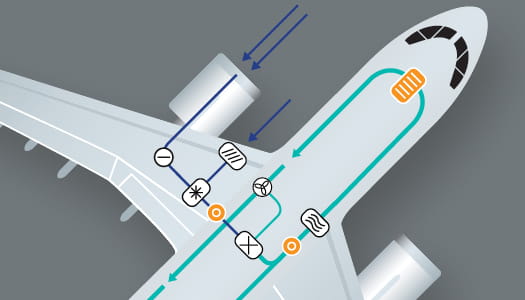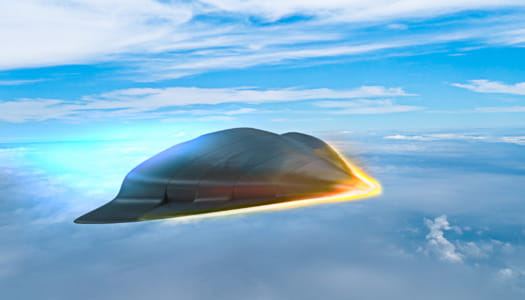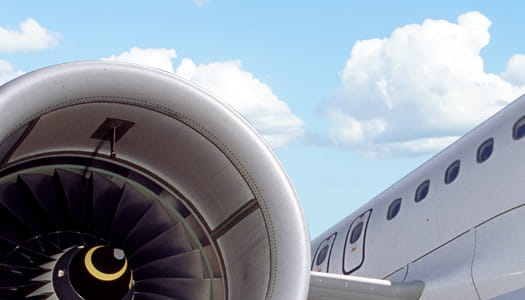>99%
Electrical efficiency enabled by superconductivity
The motors, by design, would accomplish something impossible in aviation today.
Working several in a row on each wing of an Boeing 737, they would supply enough electric power to propel the plane down the tarmac, then lift it about 30,000 feet in the air – all with near-perfect energy efficiency, and all without releasing greenhouse gases into the atmosphere.
That is the Raytheon Technologies Research Center's vision for a superconducting electric aircraft motor, a project its researchers are pursuing alongside a team of academic and commercial partners through a contract with the U.S. Department of Energy Advanced Research Projects Agency, or ARPA-E.
Under the contract, the research center is working on a conceptual design for a 2.5-megawatt, 5,000-rpm fully superconducting motor and its drive for electric aircraft propulsion. Joining in the effort will be colleagues from the University of Tennessee, Hyper Tech Research Inc., the Ohio State University and Pacific Northwest National Labs.
Though the motor they build will be tested at only 260 kilowatts – a fraction of its 2.5 megawatt capacity – it would serve as a valuable prototype for a system that could one day power single-aisle aircraft such as the 737.
"This is very ambitious," said Parag Kshirsagar, the Raytheon Technologies Research Center's principal investigator for the project. "It is a very hard problem, but we wanted to be among the first to take on the development of a fully superconducting aerospace-grade motor. It has great promise and great reward."

Parag Kshirsagar | Principal Investigator | Raytheon Technologies Research Center
The goal, according to the Department of Energy, is to "mitigate the growing environmental burden associated with commercial air travel at minimum economic cost," and the project is among many ways engineers across Raytheon Technologies are pursuing sustainability in aviation. In addition to the superconducting motor, they're building more efficient versions of current engines, exploring the use of novel and sustainable aviation fuels and developing hybrid electric propulsion – all to help meet an industry goal of net-zero carbon emissions by 2050.
"It's all about clean skies, where aviation doesn't contribute to climate change,” said Andreas Roelofs, the Raytheon Technologies Research Center's director. "The electrification of flight is a promising path to achieving that goal."
A fully electric superconducting motor would bring dramatic improvements in efficiency and power density, he said, and it would represent "kind of the end stage – as clean as you can get, as sophisticated as you can get."
The superconducting electric motor under development at the Raytheon Technologies Research Center could one day help power single-aisle aircraft.
Electrical efficiency enabled by superconductivity
Power capacity of the motor; the demo version will be tested at 260 kilowatts
Temperature required to bring the parts to their superconducting state; also known as 20 Kelvin
Approximate amount of power needed for liftoff and ascent of single-aisle commercial aircraft
To understand why a superconducting motor is such an enticing concept for electrified flight, it's helpful first to understand the use of carbon-neutral liquefied natural gas and hydrogen as alternatives to conventional jet fuel.
Those fuels have low energy density, meaning it takes large volumes to provide the necessary power – so large, in fact, they have to be chilled to extremely cold temperatures and condensed into liquid form to fit into the fuel tank.
And that's where superconductivity – the phenomenon of electricity flowing through a conductor with no resistance – comes in. Almost as if by coincidence, the cryogenic temperatures that make fuel liquefication possible can also unlock superconducting properties in certain materials – materials that can be used, for example, to build motors.
That made the experts at the Raytheon Technologies Research Center think: Why settle for just one huge improvement – clean aircraft fuel – when we can also get near-perfect electric power efficiency in our propulsion system?
The potential was too great to pass up.
"The superconducting system – if this is on the table, why not use it?" Kshirsagar said. "We're not just burning the fuel – you've got to go beyond that."
Just like a hybrid electric car, a hybrid electric plane would have both an engine and a motor – and probably several of each. The engines would burn fuel and use the heat to create mechanical power, then send it to the motors in electric form by way of generators.
So far, that's pretty ordinary. But once you bring in the concept of superconductivity, that's where the Raytheon Technologies Research Center’s design for ARPA-E gets creative.
In an ideal situation, the engineers would simply use cryocooled fuel to refrigerate the motor parts to their superconducting state. Just one problem: The fuel is flammable, so using it as a direct coolant would pose safety risks.
Until the engineers can address that concern, they've come up with a workaround. The research center's design calls for a thermal management system to refrigerate helium to -423 degrees Fahrenheit, also known as 20 Kelvin, then run it through a loop that would chill the motor stators, rotors and terminals to their superconducting state. The fuel would double as a heat sink – a place for the thermal management system to dump the warmth the helium draws from the motor parts.
In the middle of the design, driving each motor, would be a power converter made with gallium nitride – the same material that helps Raytheon Missiles & Defense build powerful, energy-efficient radars and other sensors.
Overall, the project aims to build an early version of a motor that, once scaled up, would power single-aisle aircraft during takeoff and ascent – the two phases of flight that require the most energy. The motor and motor drive combined would have an energy-conversion efficiency greater than 99 percent.
"The efficiencies of these (superconducting) motors … you can't beat that with anything else," Roelofs said.

Parag Kshirsagar | Principal Investigator | Raytheon Technologies Research Center
Exciting as the project is, building a fully superconducting motor is also, in Kshirsagar's words, "a very, very hard problem, and hence taken as a grand challenge demo under ARPA-E."
Achieving and maintaining cryogenic temperatures is the key problem, in part because cryocoolers are very heavy. To avoid adding large amounts of weight to the plane, the team is looking to develop an ultra-light version known as an advanced magnetocaloric adaptive cryocooler.
Another challenge is that it's still early in the history of superconductivity. Even though scientists have known about the phenomenon since the early 20th century, its use has been relatively narrow, most common in applications such as MRI machines and exquisite research-lab technology such as particle accelerators.
So unlike silicon semiconductors, which have benefited from decades of research and improvement, superconductors simply aren't that far along. But the more people want them, the more they'll be studied and improved – and the closer engineers like Kshirsagar and his colleagues will be to making them do things once thought impossible.
"Superconducting aircraft technology is 10 to 15 years down the road," he said. "It's a long journey, but everything has to happen now to make it possible."
The information, data, or work presented herein was funded in part by the Advanced Research Projects Agency-Energy (ARPA-E), U.S. Department of Energy, under Award Number DE-AR0001404. The views and opinions of authors expressed herein do not necessarily state or reflect those of the United States Government or any agency thereof.
For more than 90 years, the experts at the Raytheon Technologies Research Center have worked across disciplines to develop groundbreaking innovations. The center takes on a wide range of challenges, with a focus on six major areas of research.

Bringing together component subsystems to deliver the overarching functionality

Performing revolutionary research for next-generation systems, devices and processes

Digitally linking processes to form a single, contiguous definition of all value-added decisions made during a product's manufacturing journey

Increasing information collection and mission success while reducing the risks caused by human operator performance

Investing in high-power electrical components and advanced electric architectures for hybrid and electric engine technology

Driving groundbreaking innovations that advance our insights and capabilities